|
|
|
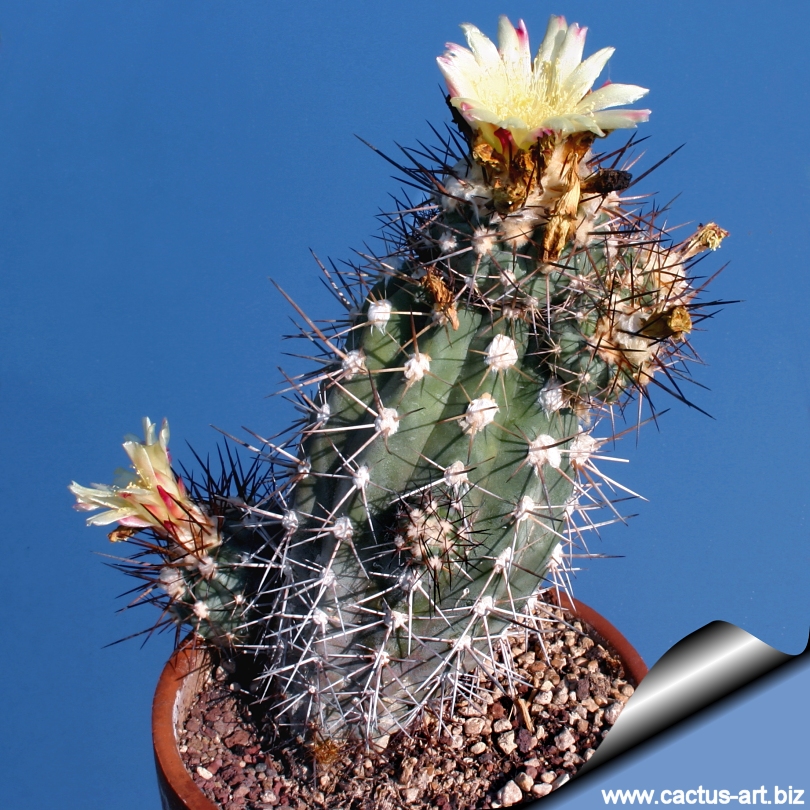
Copiapoa mollicula FR525 North of Chaņaral
airstrip, mountains, Region 02 Antofagasta, Chile
|
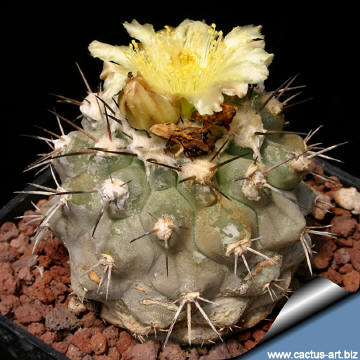 |
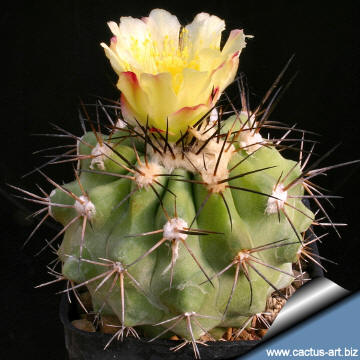 |
|
. |
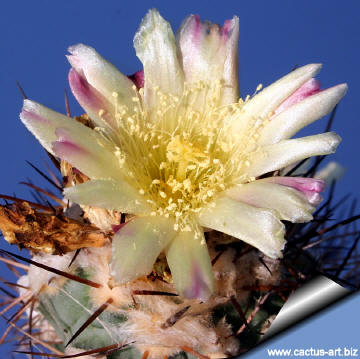 |
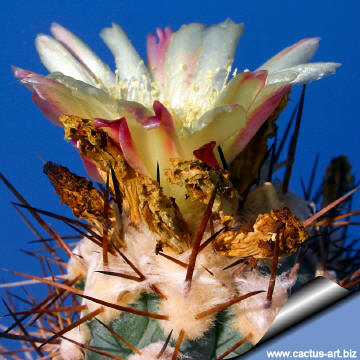 |
|
. |
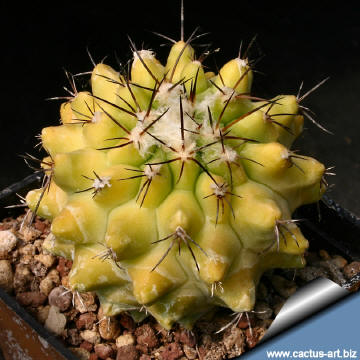
A rare specimen with yellow colouration. |
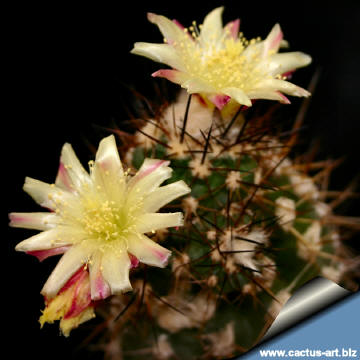
Blooms appear from the woolly top of the plant. |
|


|
|
Advertising
|
|
|
|
|
Family:
Cactaceae (Cactus
Family)
Scientific name: Copiapoa mollicula F. Ritter 1963
Origin: Distribution: Chile, Atacama: Cuastal hills
between Chaņaral and Puerto Viejo,
Conservation status: Listed in
CITES appendix 2.
Synonyms:
- Copiapoa longispina
1963
- Copiapoa montana 'mollicula'
- Copiapoa hypogaea 'mollicula'
|
|
Description:
This close relative of
C. hypogaea is usually solitary or forms small clumps.
Stem: The stem is thick soft, flat to globular 7,5 cm in diameter, often with
a nice grey-green, blue-grey, pinkish-grey or brownish-grey colour. The
apex is woolly.
Ribs: 10 to 14 ribs
Roots: Heavy underground root.
Central spines: 1 to 3 blackish, up to 2.5 cm long;
Radial spines: 5 to 9.
Flowers: Campanulate
3 cm long and grow from the centre of the white wool at the apex. Outer
segments of the perianth are linear and orangish;
inner segments are wide, blunt and yellow
|
|
|
|
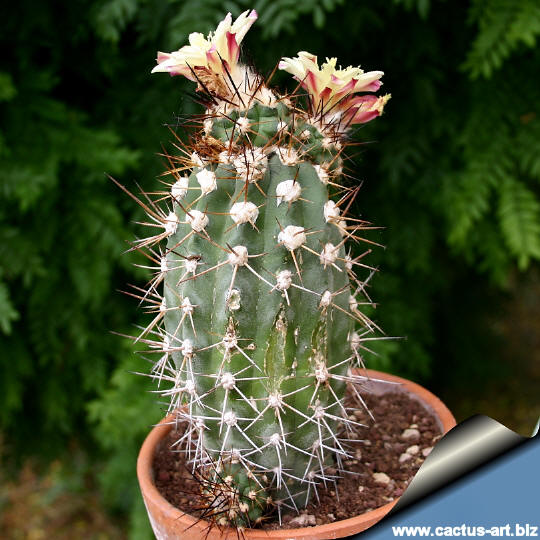
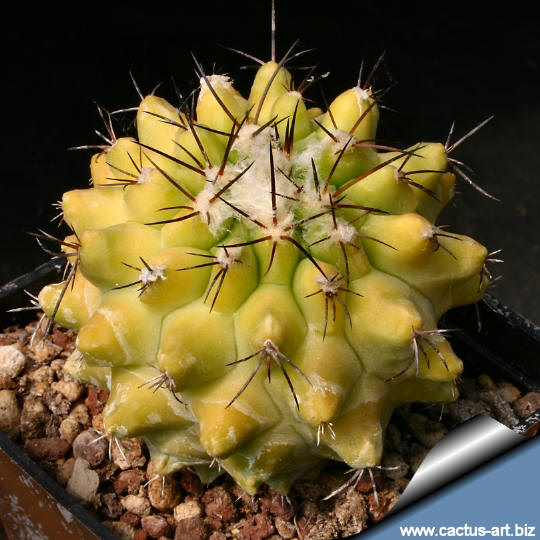
A rare specimen with yellow colouration.
|
|
Cultivation:
Very slow growing, need full sun but should be protected from excessive
heat and sun in summer. Require light watering and good drainage. Keep
warm and dry in winter to avoid rot. It needs mild
heat in winter, avoid any frost.
Propagation: Seeds or or stems planted
as cuttings. Grafting is often used to speed growth rate and to
create a back-up to plants in collection.
Photo of conspecific taxa,
varieties, forms and cultivars of
plants belonging to the Copiapoa hypogea
complex
(This
Taxon
has lots of synonyms
(
like many other cacti) with several controversial varieties and subspecies,
and comprises a multitude of different forms, but where each form
is linked to others by populations of plants with intermediate
characteristics):
|
|